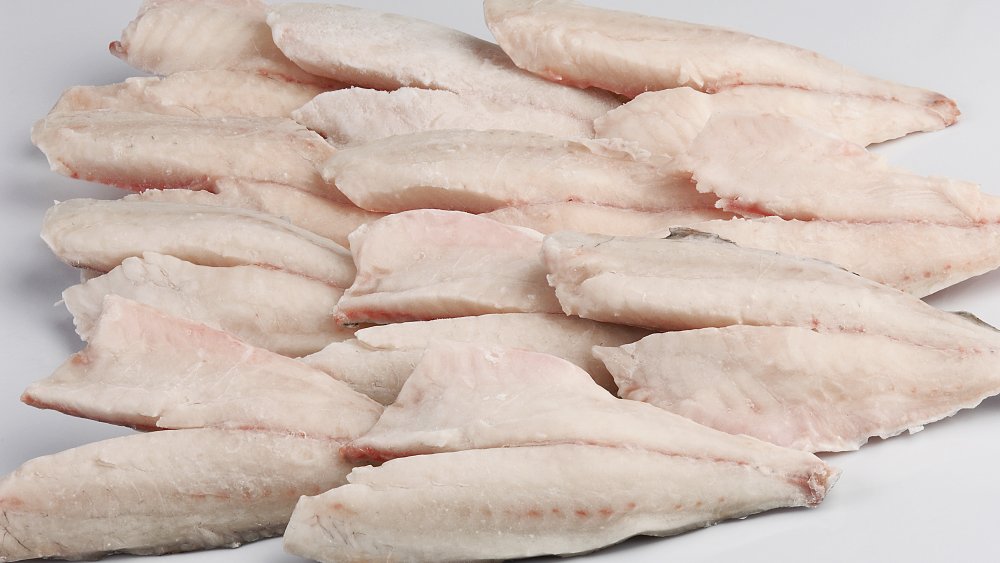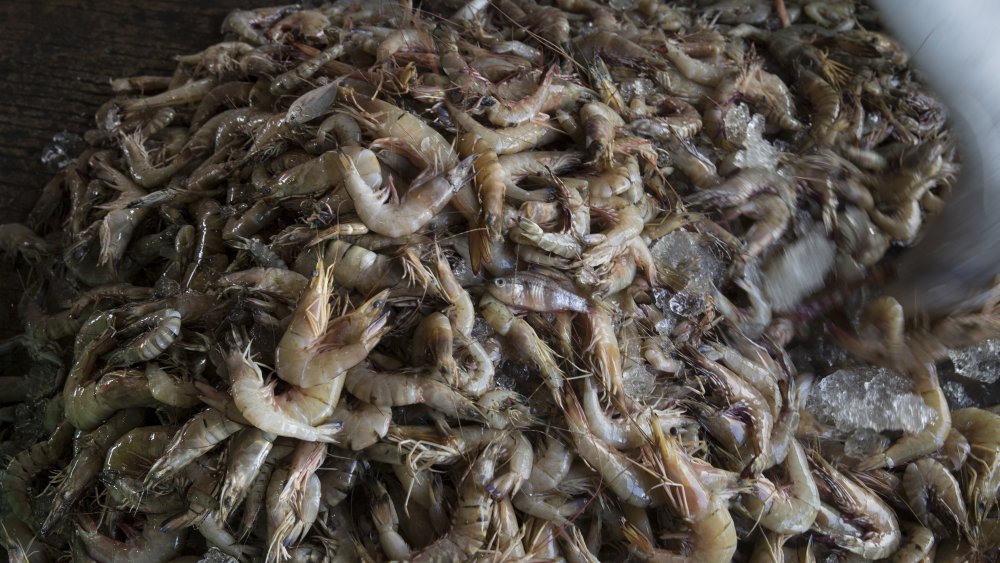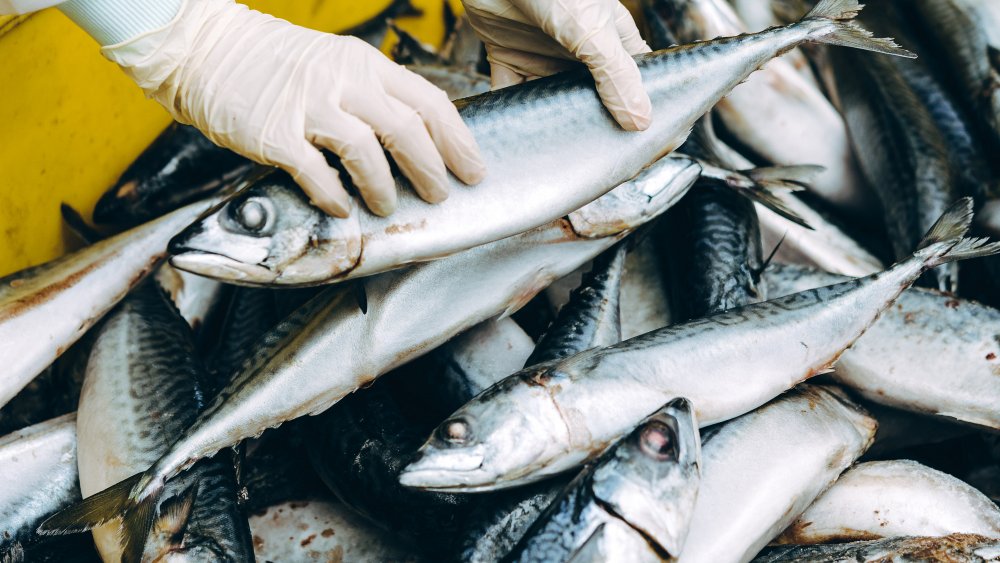The Real Reason You Shouldn't Buy Cheap Seafood
If you love seafood but can't make your wallet stretch out enough to make it fit, you're most likely better off leaving that bag of prawns or fish fillets where you saw it, and saving up for better-quality seafood. Your grocer is probably aware of where it came from, and would prefer that you buy and consume it, without asking too many questions.
Unfortunately, most of the seafood in our supermarkets today is cheap, industrially-grown overseas, imported and sold without much oversight. Vice says less than 2 percent of imported seafood is actually inspected by the FDA. They're products of what author Paul Greenberg tells NPR is the great American fish swap. "In effect, what we're doing is we're sending the really great wild stuff that we harvest here on our shores abroad. And in exchange, we're importing farmed stuff that, frankly, is of an increasingly dubious nature."
Most of our shrimp comes from cheap, unregulated sources
This is also true of shrimp, which is the most consumed seafood in the country today, and the bulk of the crustaceans are cheap imports from Asia. Unfortunately, as The New York Times points out via Forbes, transshipment, or the practice of sending products from one country, to another and then having the product shipped to the U.S. from the second country, is rampant in the shrimp trade. This practice only serves to make our cheap, potentially-questionable shrimp even more dodgy. In one instance, a U.S. Government Accounting Office found that after the FDA banned the import of Chinese-farmed shrimp because producers were adding unapproved drugs. These suppliers sent the seafood to Malaysia instead, relabeled it, and sent millions of dollars worth of tainted shrimp to the U.S. through Malaysia anyway.
Domestically-caught fish may be slightly more expensive, but they are worth it
The safest way to get good seafood is to save up, go to an ethical fishmonger, and buy domestically caught species. Make sure that you're picking up fish, prawns, and scallops when it's seasonally appropriate, and that they are harvested out of waters that are closest to you. If a particular seafood you might be craving is off-season in the U.S., but available as a "fresh" import, or as a frozen domestic option, go for the domestic catch.
Surprised to hear that advice? Consider that most seafood caught in the country is frozen at sea — and it arrives to a store as fresh as when it was caught. As Vice contributor and seafood blogger Gabrielle Stommel puts it, you really get what you pay for where seafood is concerned and as such, good seafood is not cheap, and cheap seafood is not good. So, the next time you spot a pack of seafood at your local grocer that's priced at levels which are "too good to be true," it's best to give that pack a miss, because it most likely is.


